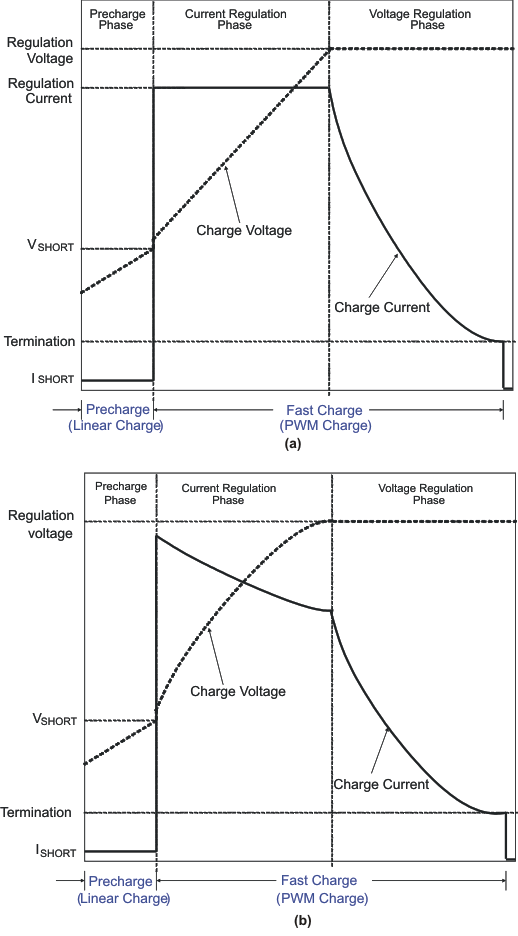ZHCSAF0E September 2012 – January 2018
PRODUCTION DATA.
- 1 特性
- 2 应用范围
- 3 说明
- 4 修订历史记录
- 5 说明 (续)
- 6 Device Comparisons
- 7 Pin Configuration and Functions
- 8 Specifications
-
9 Detailed Description
- 9.1 Overview
- 9.2 Functional Block Diagrams
- 9.3 Operational Flow Chart
- 9.4 Feature Description
- 9.5 Device Functional Modes
- 9.6 Programming
- 9.7 Register Description
- 10Application and Implementation
- 11Power Supply Recommendations
- 12Layout
- 13Device and Documentation Support
- 14机械、封装和可订购信息
9.5.1.1 Charge Profile
Once a good battery with voltage below the recharge threshold has been inserted and a good adapter is attached, the bq24157 enters charge mode. In charge mode, the IC has five control loops to regulate input voltage, input current, charge current, charge voltage and device junction temperature. During the charging process, all five loops are enabled and the one that is dominant takes control. The IC supports a precision Li-ion or Li-polymer charging system for single-cell applications. Figure 17 (a) indicates a typical charge profile without input current regulation loop. It is the traditional CC/CV charge curve, while Figure 17(b) shows a typical charge profile when input current limiting loop is dominant during the constant current mode. In this case, the charge current is higher than the input current so the charge process is faster than the linear chargers. The input voltage threshold for DPM loop, input current limits, charge current, termination current, and charge voltage are all programmable using I2C interface.
 Figure 17. Typical Charging Profile for (a) without Input Current Limit, and (b) with Input Current Limit
Figure 17. Typical Charging Profile for (a) without Input Current Limit, and (b) with Input Current Limit